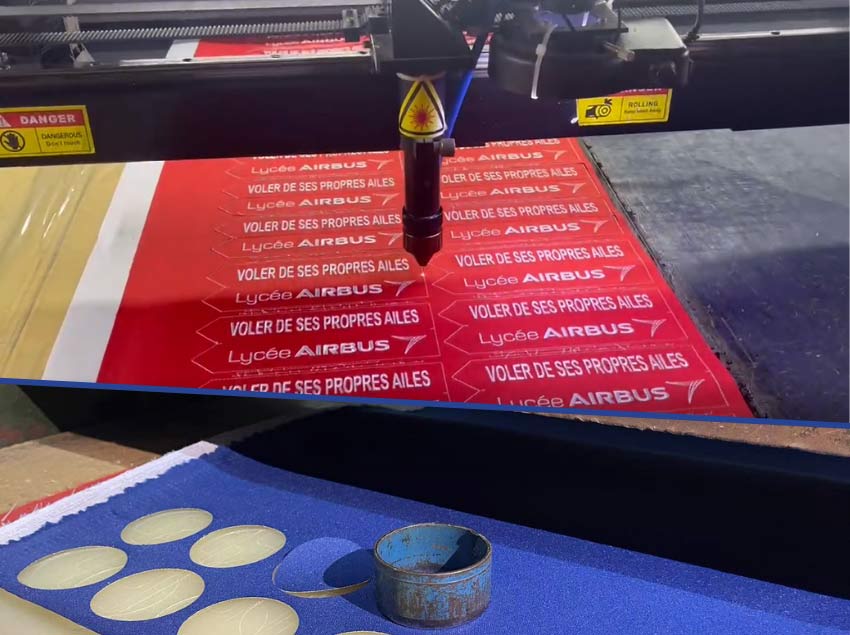
Embroidery Patch Shape Cutting
Every patch design we create is distinctly unique, tailored to meet the specific requirements and vision of our clients. The process of bringing these designs to life involves several processes, and the method of cutting plays a crucial role. For patches with simple shapes such as round, square, or triangle, we employ scissor cutting for smaller production runs or utilize a cut die for larger quantities, ensuring a swift and efficient operation. The choice between these methods is guided by the scale of production, allowing us to maintain accuracy while optimizing the process on a timely manner.
- Video
If the quantity of embroidered patches is small, manual cutting is used for shaping. When producing large-scale embroidered patches, we create a mold for the shape and use a machine for die-cutting to increase production efficiency.
Laser cutting stands out as one of the most efficient methods for shaping embroidery designs. This technique ensures precise external shapes, regardless of the required quantity. At our embroidery factory, we take pride in our commitment to utilizing the latest technology and techniques. This dedication ensures that our customers receive embroidery products of the highest quality available. We continually strive to push the boundaries of creativity and efficiency to deliver exceptional results that meet and exceed the expectations of our valued clients.
Heat cut involves embroidering a fine border first, and then using a heat cut machine to melt and shape it. When touched by hand, the edge feels hard. For irregularly shaped or small embroidered patches, heat cut border is the preferred method. Embroidered patches on twill fabric are best treated with merrow or heat cut border. For patches on felt or velvet fabric, heat cut the edges is less likely to result in fraying.
